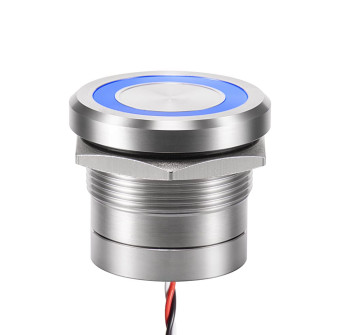Available with diameter 16, 19, 22 or 25 mm bushing, CP series sensory switches are extremely easy to use and ideal for repetitive applications (no operating force). Their IK10 robustness and unlimited life are perfect for self-service applications.




16mm Capacitive Switch
LANGIR's CP Series Capacitive buttons utilize advanced technology that senses the touch of a finger and creates an electrical charge to activate the button. Equipped with an auto-calibration function, the sensors adapt to changing external environments for consistent performance.
Our capacitive buttons are designed for durability and require low activation force, making them as sensitive as a touch screen. These features make our capacitive buttons ideal for industrial applications where repetitive activation can cause operator fatigue. Choose LANGIR for reliable and high-quality capacitive buttons that improve user experience and productivity.
Learn More: What is a Capacitive Switch and How Does it Work?
16mm Capacitive Buttons
- Activated by the easy touch of a finger, the capacitive buttons extremely to use
- Adjustable sensitivity sensor adapts to external environments
- Easy-to-locate or on/off indication is possible through independent or output image LED functionality
- Easy to clean because the capacitive buttons are impervious to dust and dirt, and resistant to harsh chemicals and contaminants
- 50 million cycles and no moving mechanical parts make LANGIR’s CP Switches robust and durable
- Available in momentary or latching and with or without illumination
Main Features
Autocalibration
Momentary or latching
Independent or output image LED functionality
Adjustable sensitivity
50 million cycles
No moving mechanical parts to wear out
Bushing diameter 16, 19 or 22 mm
Impervious to dust and dirt
Resistant to harsh chemicals and contaminants
Sealed to IP68 and IP69K
Impact resistance : IK10
Key Features
Operating force : 0N
LED state for output image option :1 LED : the LED is ON when the output is closed.2 LEDs : first colour is ON when the output is open. Second colour is ON when the output is closed.
Output type : NPN / PNP
Life expectancy : 50 million cycles
Adjustable sensitivity : Connection to ground by means of the yellow wire increases sensitivity (momentary version only)
Benefits
Extreme ease of use/ Adaptable/ Easy-locate or on/off indication/ Easy to clean/ Robust and durable
Order Code
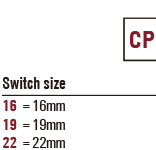 |
 |
 |
 |
 |
 |
 |
 |
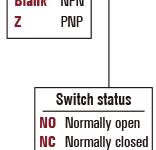 |
 |
 |
 |
 |
 |
 |
 |
 |
 |
 |
 |
 |
 |
 |
 |
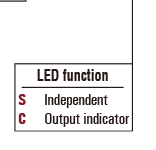 |
Specifications
| Environmental Specifications |
|
| Sealing | IP68 and IP69K according to IEC 60529 Triggered by flowing water |
| Impact resistance | IK10 |
| Operating temperature | -20°C to +65°C |
| ESD | complies with EN61000-4-2 (extended) ± 8KV (20 contacts) and ± 15KV (20 air discharges) |
| Electrical and General Specifications | |
| Max. current/voltage rating | 200mA 24VDC |
| Supply voltage | 5 to 24VDC |
| Life expectancy | 50 million cycles |
| Power consumption non-illuminated | 7mA |
| Power consumption illuminated | 25mA |
| Operating force | 0N |
| LED state for output image option | 1 LED : the LED is ON when the output is closed. 2 LEDs : first color is ON when the output is open. Second color is ON when the output is closed. |
| Output type | NPN / PNP |
| Materials | |
| Case | stainless steel, anodized and plastic |
| Terminal | • Multi-wire leads section 0,22 mm2 length 300 mm • Cable, length 300 mm, section depending on switch model • Connector : HE14 6V compatible with AMP/TYCO281839-3 |
Wiring Diagrams
 |
 |
 |
 |
 |
 |
 |
 |
 |
 |
 |
 |
 |
 |
 |
 |
 |
 |
 |
 |
 |
 |
 |
 |
 |
Legend
R red +V
Black black GND
W white output
A = same colour as LED
Wire colours may vary.
Always refer to the label on the switch.
FAQs
1. What are capacitive buttons?
Capacitive buttons are touch-sensitive buttons that utilize the principle of capacitance to detect the presence and location of a user’s touch. They are commonly found in electronic devices and provide a sleek and responsive user interface.
2. How do capacitive buttons work?
Capacitive buttons consist of a capacitive touch sensor and an underlying circuit. When a user touches the button’s surface, it creates a change in the electrical field, which is detected by the touch sensor. The sensor then sends signals to the circuit, triggering the desired action or function.
3. What are the advantages of capacitive buttons over traditional mechanical buttons?
Capacitive buttons offer several advantages, including:
- Durability: Capacitive buttons have no moving parts, making them more durable and resistant to wear and tear.
- Easy to clean: Since capacitive buttons are flat and seamless, they are easy to clean and maintain.
- Sleek design: Capacitive buttons provide a modern and minimalist design aesthetic, contributing to the overall appearance of electronic devices.
- Multitouch capabilities: Capacitive buttons can support multiple touch points simultaneously, enabling gestures such as pinch-to-zoom or swipe actions.
4. Can capacitive switches be used in outdoor environments?
Yes, capacitive switches can be designed to withstand outdoor environments. They can be made resistant to water, dust, and other environmental factors, ensuring their reliable operation even in challenging conditions.
5. Can capacitive buttons work with gloves or styluses?
Some capacitive buttons are designed to be compatible with gloves or styluses. However, this depends on the sensitivity and design of the specific capacitive touch sensor. In general, capacitive switches are more responsive to touch from bare skin, but there are specialized touch sensors that can detect input from gloves or styluses with different levels of effectiveness.
Send your inquiry now
Main products

19mm Capacitive Switch

22mm Capacitive Switch

25mm Capacitive Switch

16mm Piezo switch

19mm Piezo switch

22mm Piezo switch
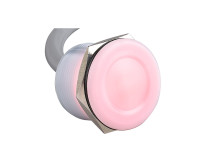
Plastic Piezo Switch


 English
English 简体中文
简体中文











